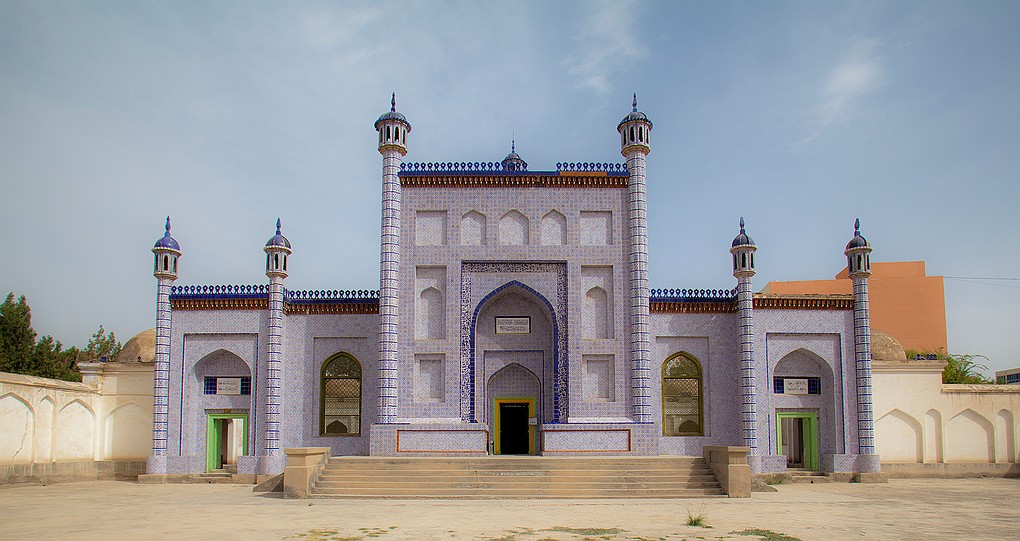The Role of the Taklamakan Desert and Uyghur States in Medieval Trade Networks, c. 1200
The Role of the Taklamakan Desert and Uyghur States in Medieval Trade Networks, c. 1200
Uyghur Bookshelf
During the Middle Ages, around the year 1200, trade networks were intricate and widespread, linking distant regions through a series of interconnected routes. One of the most significant networks was the Silk Road, which facilitated the exchange of goods, ideas, and cultures between the East and the West. Within this network, the Taklamakan Desert played a crucial role.
The Silk Road was a series of trade routes that connected China, Central Asia, the Middle East, and Europe. It was not a single road but a network of routes that included overland and maritime paths. The Taklamakan Desert, located in The Uyghur States, was one of the most challenging and crucial segments of the Silk Road.
Role of the Taklamakan Desert
1. Geographic Position: The Taklamakan Desert lies in the heart of Central Asia, flanked by the Tengri Tagh Mountains to the north and the Qara Qorum Mountains to the south. This positioning made it a central passageway for traders travelling between China and the West.
2. Oasis Towns: The desert was barren, with shifting sands and extreme temperatures. However, around its periphery were a series of vital oasis towns such as Kashgar, Khotan, and Yarkand. These towns served as crucial waypoints where caravans could rest, resupply, and trade goods. They became bustling centres of commerce, culture, and exchange.
3. Cultural and Economic Exchange: These oasis towns were melting pots of different cultures, languages, and religions. Traders from various regions brought silk, spices, precious stones, metals, and textiles. In addition to material goods, ideas and technologies, including paper-making, gunpowder, and artistic styles, were exchanged, significantly influencing the civilizations connected by the Silk Road.
4. Trade Caravans: The caravans that crossed the Taklamakan Desert were typically composed of camels well-suited to the harsh desert conditions. These caravans moved in stages from one oasis to the next, facilitating the long-distance trade of high-value, low-bulk goods that could withstand the long journey.
5. Dangers and Challenges: Crossing the Taklamakan Desert and its natural hazards, such as sandstorms and extreme temperatures, were dangerous. As a result, the routes around the Taklamakan were carefully chosen, and travel was often done in large, well-prepared caravans.
Significance in Medieval Trade Networks
The role of the Taklamakan Desert within the broader context of medieval trade networks was substantial:
• Connectivity: It connected the Chinese empire with the Islamic world and, through further links, with Europe. This connectivity was crucial for the movement of luxury goods and the spread of technologies and cultural practices.
• Economic Impact: The trade that passed through the Taklamakan Desert significantly affected the region's economies. It enabled the prosperity of cities and areas along the Silk Road and facilitated economic interdependence.
• Cultural Exchange: The movement of people along the trade routes fostered significant cultural exchange, influencing art, religion, science, and technology across continents.
The Uyghur States
The Uyghur States, which emerged in the oasis towns around the Taklamakan Desert, played a crucial role in these trade networks:
• Political and Economic Hubs: These states, including capitals such as Kashgar, Khotan, and Yarkand, were independent or semi-independent entities that controlled critical segments of the trade routes. They became wealthy and influential by taxing and facilitating trade.
• Cultural Melting Pots: The Uyghur states were characterized by a high degree of cultural and religious diversity, reflecting the varied backgrounds of the traders and travellers. They were centres of Buddhist, Manichaean, Nestorian Christian, and Islamic learning and culture.
• Economic Powerhouses: The wealth generated from trade allowed these city-states to flourish economically. They became production centres for goods such as silk and jade, which are highly valued in international markets.
In summary, the Taklamakan Desert was a pivotal section of the Silk Road with its challenging terrain and strategic oasis towns. Around 1200, it played a vital role in facilitating trade and cultural exchange during the Middle Ages, thereby contributing significantly to the interconnectedness of the medieval world. The Uyghur States, thriving in the oasis towns around the desert, were essential in this network, acting as economic and cultural hubs that connected diverse civilizations.



Comments
Post a Comment